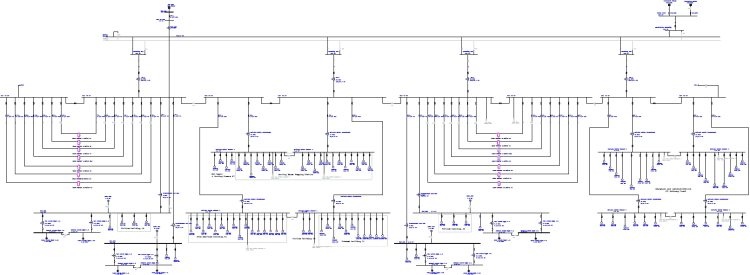Power grid studies
Short-circuit current calculation
Background
At any point on an electricity grid, there is a risk that a short circuit will appear. Such short-circuits immediately cause circulation of large currents originating both from the supply sources and also from some of the loads (reinjection). They can result in serious accidents on industrial sites (personal injuries, fire, etc.).
An upstream modification of the electricity supply network (transmission or distribution grid), or of the electrical installation or the operating configurations, can lead to a variation in the levels of short-circuit current.
Requirement
It is therefore essential to calculate the values for the short-circuit currents which could appear at each point on the grid and under all possible configurations in order to be able to size the distribution equipment (cables, transformers, panels, etc.) and to establish the settings for the protection devices.
Principle :
Capsim performs short-circuit current calculations using numerical simulation by modelling the entire grid concerned and considering the various influencing parameters: short-circuit power of the supply, normal/emergency modes, load factor, load reinjection from the motors, supply configurations, etc. These calculations are carried out according to the applicable norms and standards, in particular IEC 60909, IEC, IEC 61363 NFC 13200, UTE C13-205, ANSI C37 013.
These studies are performed on voltage grids, from the LV to HVB level, and possibly including the autonomous generators.
Results
All of the characteristic short-circuit data are calculated:
- IP: peak asymmetric current
- I’’k: initial symmetric current, effective value
- Ik: continuous current, effective value
- Ith: Equivalent thermal current
- Ib: cut-off current
- Idc: asymmetric component
The data are used to size the equipment as well as for adjusting the protection devices

Short-circuit calculation for a grid


